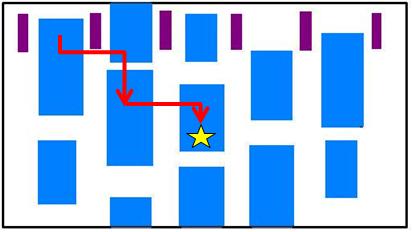Abstract:
Radiation portal monitors are being deployed at border crossings in the U.S. and abroad to help prevent smuggling of nuclear and radiological materials; however, balancing security with the free-flow of commerce is not an easy task. Delays caused by portal monitors can have major economic implications. With the land border crossings, there are typically several lanes for vehicles, each equipped with a portal monitor. One issue with the system is that if a vehicle contains radioactive material, it may set off multiple detectors. Once detectors are alarmed, border agents must stop traffic, locate the source with handheld detectors, and identify the nature of the material. This inspection process is time-consuming and inefficient. The objective of this research is to develop an algorithm for identifying the location of a radioactive source using a distributed array of detectors. It will enable near real-time analysis of detector signals to reduce the impact portal monitors have on the throughput of vehicles at a border crossing.
This problem is an ill-posed inverse problem that we solve deterministically. The algorithm uses an iterative method to solve the forward and adjoint transport equations. It uses a gradient method to minimize an error functional that describes the difference between the predicted and actual detector measurements. Metrics of interest to the system include the accuracy of source location determination, the computational efficiency of the approach, and the ability to incorporate detector uncertainties and a priori information into the inverse analysis.

Source Location Algorithm diagram
Associated Publications:
- K.A. Miller W.S. Charlton, "An Inverse Source Location Algorithm for Radiation Portal Monitor Applications", 51st Annual Meeting for the Institute of Nuclear Materials Management, Baltimore, Maryland, July 11-15, 2010.
- K.A. Miller and W.S. Charlton, "An Inverse Method for Locating a Radioactive Source Using a Distributed Array of Detectors", Transactions of the 2010 American Nuclear Society Annual Meeting, San Diego, CA, June 13-17, 2010.
- K. A. Miller, "An Inverse Source Location Algorithm for Radiation Portal Monitor Applications", Ph.D. Dissertation, Nuclear Engineering, Texas A&M University, College Station, TX (2010).
- K.A. Miller W.S. Charlton, "An Inverse Transport Approach to Radiation Source Location for Border Security", Proceedings of the 29th Annual Meeting of the ESARDA, Aix-en-Provence, France, May 22-24, 2007.